

|
Anticipation Scope� and Anticipatory Profile� Copyright 2004 - Mihai Nadin - ant� Institute. All rights reserved. Many of our daily activities involve more than simple action-reaction movements. Maintaining balance, executing a golf swing or walking on precarious ground all requires complex anticipatory processes. This anticipatory aspect of sensory-motor behavior has been ignored or not well studied by cognitive scientists, neuroscientists or scientists involved with biomechanics and kinesiology who focus mainly on the �mechanics� of movement. Anticipation is a feature of the living, is important for survival, and is embedded within our cognitive repertoire; and we notice it only when it fails us. The behavioral and somatic manifestations of anticipation can be studied using a number of techniques. The quantification of these parameters and how they evolve over time (seconds to years) will allow us to study the development and maintenance of these anticipatory processes. Data acquisition will be done on a number of parameters including, but not limited to movement anticipation (action), muscle activation (EMG), heart rate (EKG) and galvanic skin responses (EDR). Motion analysis will be performed in the Motion Capture Biosensor Lab at the University of Texas at Dallas. Motion capture is a novel technology that will allow us to understand anticipatory behavior during the performance of tasks that demand goal directed behavior (returning a tennis serve, opening a door, catching a ball, etc). The analysis of motion anticipation will be complemented by many other techniques such as Electrocardiogram (heart rate), Electromyogram (EMG) and skin response (EDR). The EMG will significantly complement the motion capture data. Research has shown that the EMG signal can be detected before a muscular activity, that is, in anticipation of it. The EMG signal is among the first to represent events preceding a human action after a stimulus (physical or mental) is triggered or occurs, which in turn, informs us about anticipation. The knowledge we hope to acquire from the EMG profile of the actions to be studied might serve researchers interested in further applications of anticipation in rehabilitation, sports medicine, and military training. Along with EMG, we will also examine electrodermal activity (EDA) or the galvanic skin response (GSR). This activity can be quantified during an emotional event (e.g., arousal), and even in anticipation of forthcoming events. Certain stressful activities (giving a public lecture, performing in front of others, taking an examination, etc) are associated with anticipatory preparedness before the activity. The EDA response is measured as a change in secretion by sweat glands (the skin, especially the palm, displays increased conductivity). Thus, sensory stimulation and motion are expressed in the electrodermal activity in ways that deserve our attention. We will also add a heart monitor since there is increased autonomic activation (e.g., increased heart rate) during anticipation of an event (e.g., a stressful event). We also intend to add a force plate floor (to measure the time vector of 3-dimensional force application under each foot) and a gait mat (for left/right stance, support time, step and stride length, and reference values from speed, age, gender, etc) to the current lab setup. We intend to data-mine the coordinated streams of data (motion capture, electromyography, electrodermal activity, etc.) to extract information regarding the temporal dynamics of anticipatory muscle activation (e.g., balancing acts, walking, etc). In these experiments, we will not restrict our research to specific bodily functions or processes, but will integrate these processes into an evolving and complex dynamic behavior. The anticipatory expression within these domains needs to be addressed as in a more holistic way. We need to deal with a variety of data formats specific to motion capture, EMG, EDA, EKG that will be used to describe particular motions and how the individual action adapts to a changing environment. These and other descriptions (both qualitative and quantitative) need to be integrated into a common framework in order to generate a comprehensive of anticipatory profile of the individual. It is currently impossible to study the complex dynamics of human actions, such as walking, and complex motor sequences, such as catching a ball, aiming, or executing a golf swing, that involve anticipation by using brain recording and imaging techniques. The methods we employ (high resolution motion capture combined with additional recordings, such as EMG, EDA, EKG, etc) will allow us to capture the dynamics and timing of anticipatory behavior in real time. These techniques form part of a research project to study the decline of anticipatory processes during aging. |
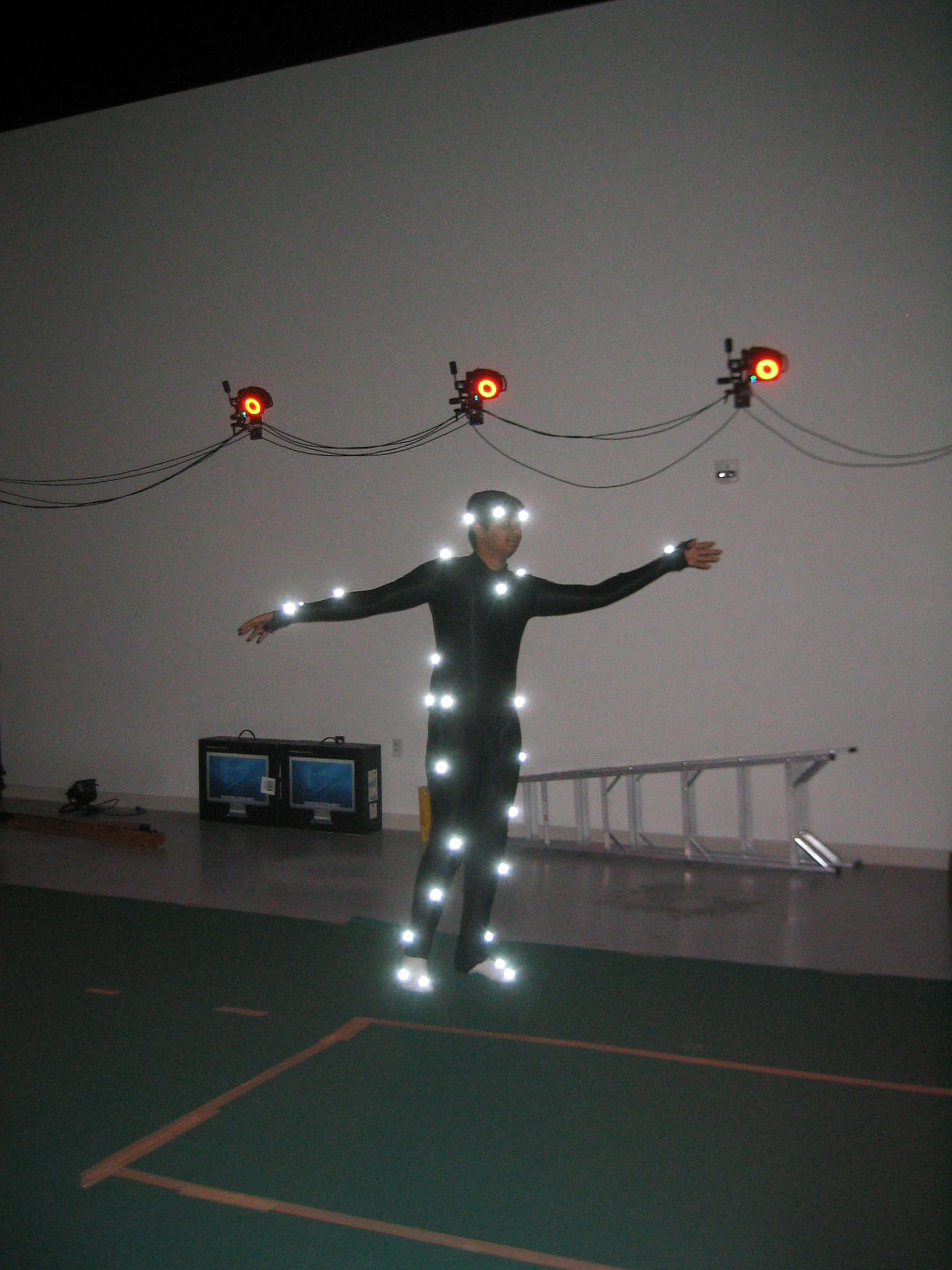 The Motion Capture Lab, in cooperation with the Institute for Interactive Arts and Engineering, and Department of Computer Science at UTD will allow for the quantified study of anticipatory models and hypotheses such as non-locality, mirror neurons, attractors, among others. 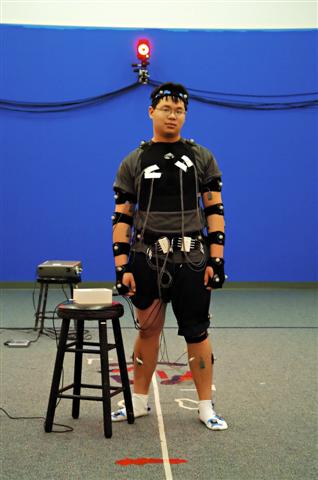 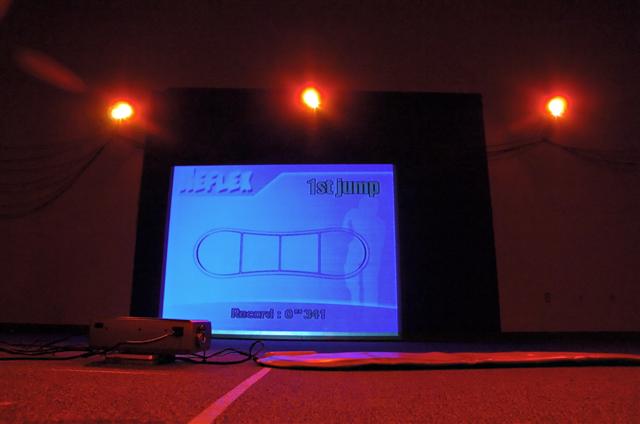 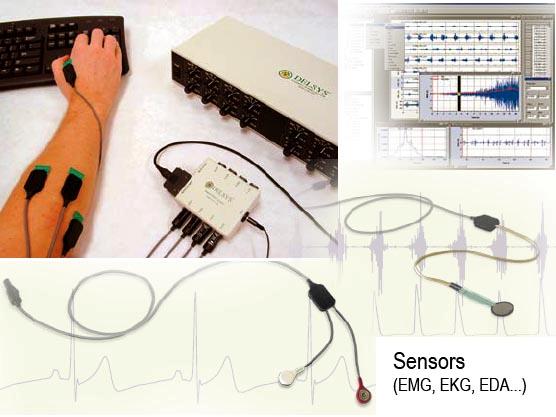 Motion capture data is fully integrated with a wireless data collection array including Electromyogram (EMG; muscle activity), Electrocardiogram (EKG; heart rate), and the Electrodermal Skin Activity (EDA; galvanic skin response). The various streams of data are integrated in real time. Data obtained from motion, EMG, EKG, EDA, and other parameters (e.g. applied force by hand and foot) are holistically captured, not simply particular instances of an action - to generate an anticipatory profile� of the individual. 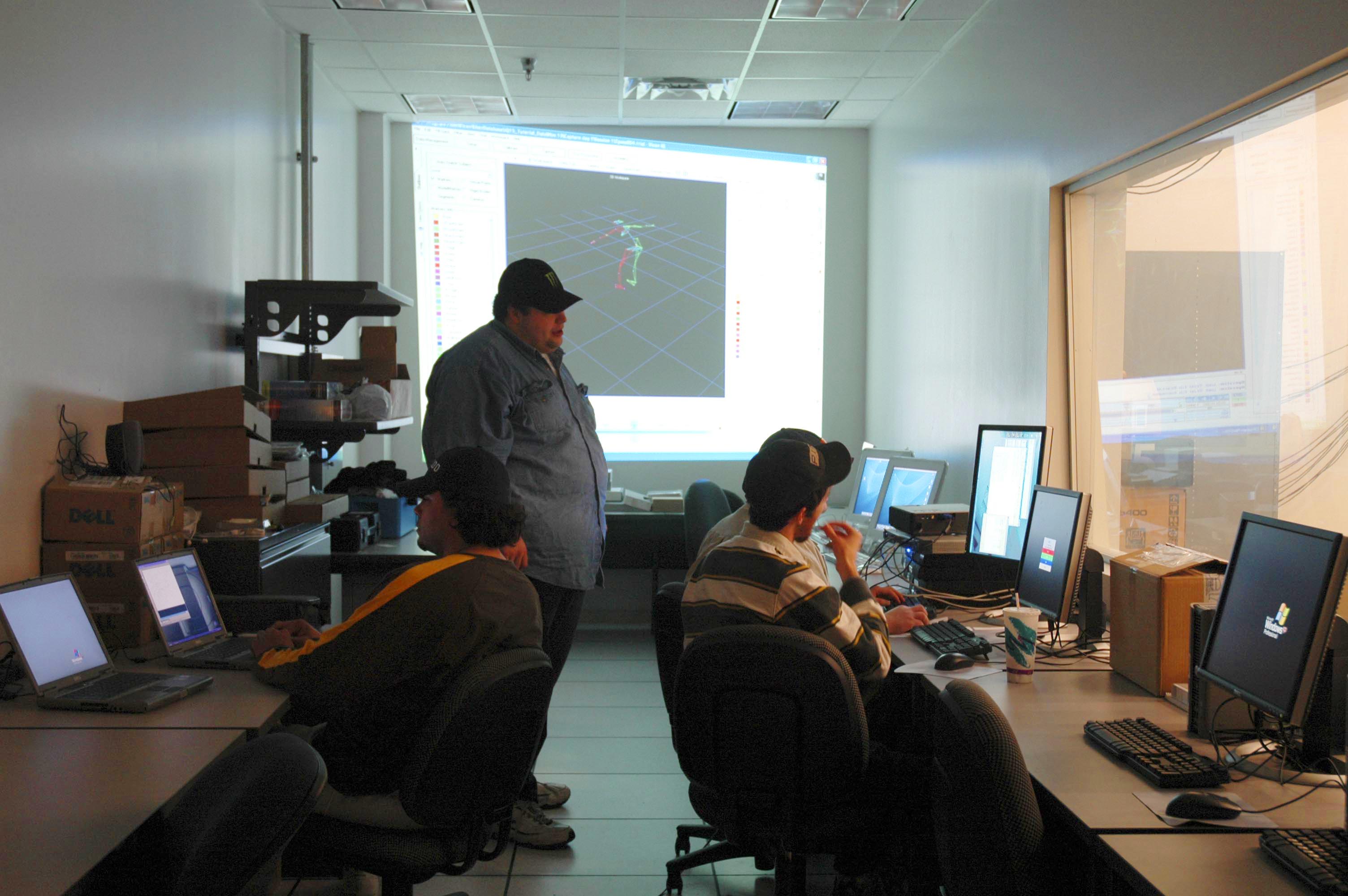 The antÉ graduate lab is where all the work for the Senludens is done. In addition to providing data processing and editing capabilities for MoCap, it will allow for software development in the area of anticipatory computing, anticipatory engineering, and anticipation-based design. |
|
|
ant� : Institute for Research in Anticipatory Systems The University of Texas at Dallas � 2004, 2005 |
||